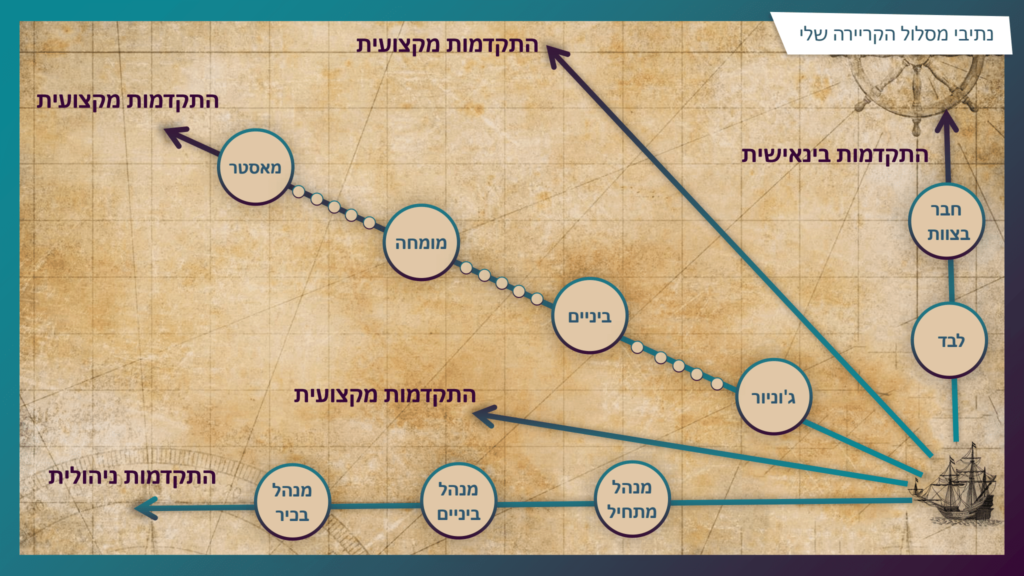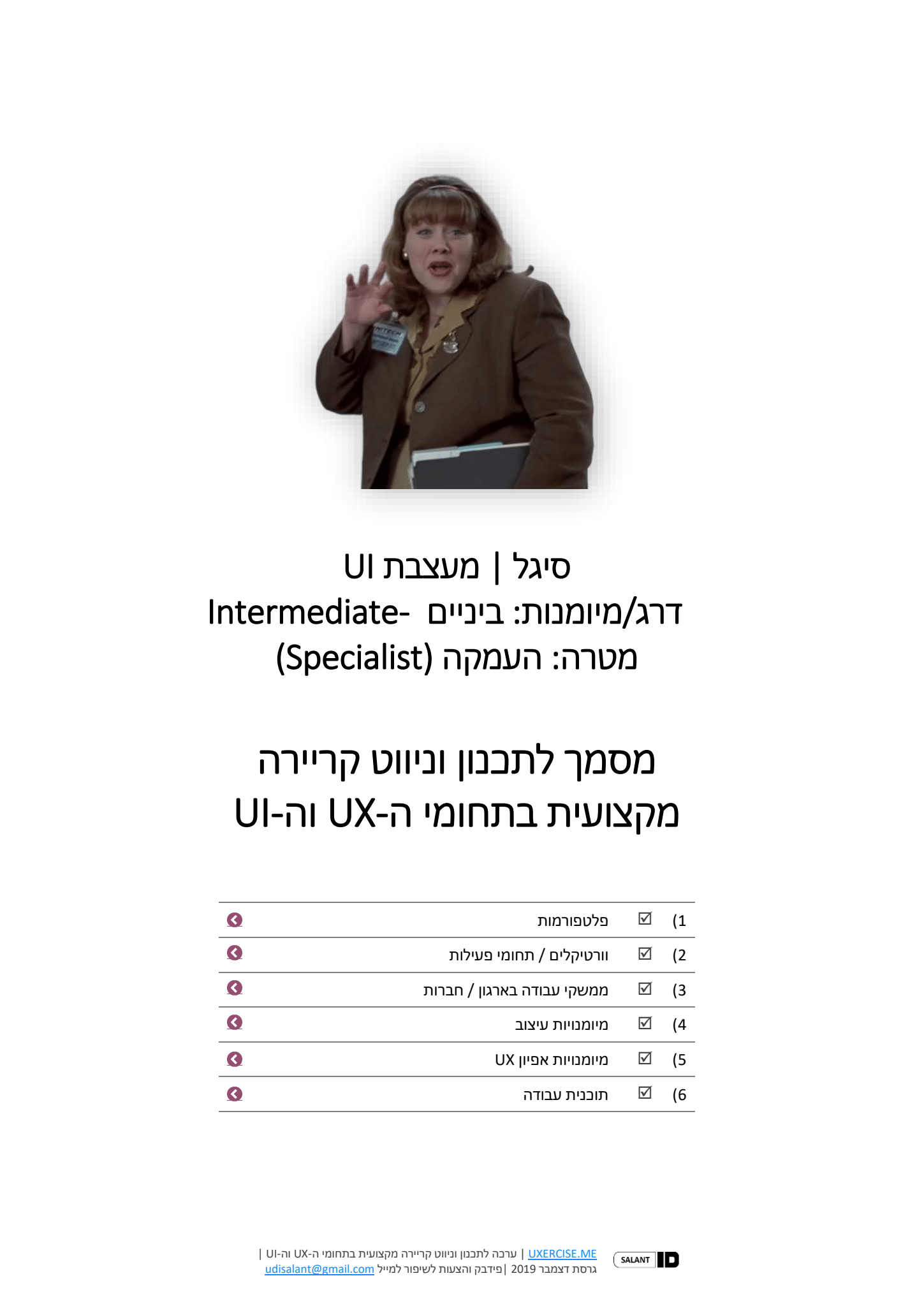About three years ago, a few months before the Covid-19 pandemic began, there was a UXI conference that dealt with professional development. One of the most prominent lectures at the meeting was given by Udi Salant, our studio director. The lecture received excellent feedback, and to this day the methodology he developed over the years, after many years of managerial experience (over 20), helps designers at every stage of their professional career. Therefore, we thought it would be right to summarize the main points of the lecture, and if you wish, you can watch the recording and download the document kit shared by Udi.
Udi Salant is an experienced UX designer and manager in his mid-forties, married with two children and living in Herzliya. Today he works as a freelancer as the director of the Salant ID studio, which he founded about 6 years ago, and employs several UX and UI designers. The studio specializes in complex applications and systems in a variety of areas of interest. In the past, Udi managed the design and characterization departments at the Pelephone company as well as at the Zap group. Under his management, he helped the continued professional development of his employees and accordingly developed and perfected a methodology for professional development in the fields of characterization and design that can help anyone at any stage of their professional career.
At the basis of the methodology is the necessity to stop periodically and examine the progress towards reaching predetermined goals, even as a beginner in the field, but also as an mid-level and even senior-level employee. If you have the ambition to build a professional path, focusing on the directions that suit you and the processes of learning and development, and maintaining relevance to the field along the way – then you have come to the right place! In the end, the meaning derived from this is taking responsibility for your professional career while initiating, planning and implementing a professional plan formulated by you.
The steps in the process
These are the steps to follow in order to plan a career path for yourself and meet your goals:
- Define where you think you are and where you aspire to go. You are the ship and you are sailing in the endless ocean of the professional world. There is no one path in this “ocean” and we live in several different dimensions in our career:
- The dimension of professionalism: How professional am I in what I do? Between junior and master, where would I place myself?
- Interpersonal dimension: Do I work alone? As a team member? Where am I located today and where do I aspire to be?
- Management dimension: Do I aspire to management? Where am I in the management level from beginning manager to senior manager?
- Decide if you want to delve deeper into a certain field or expand and explore other parallel fields. Will you want to put an emphasis for the next few years in one area (for example, cyber-applications, monitoring systems, management systems, etc.) or will you want to try all kinds of fields to get to know and know a little of everything?
Map the areas and define relevant goals
UX/UI designers operate in a space consisting of six different dimensions:
A. Platforms and technologies – including newsletters, landing pages, websites, mobile apps, responsive websites, wearables, monitoring and control systems (dashboards), complex systems, and more.
B. Work interfaces/types of companies – these include small organization (50), medium organization (50-500), large organization (500+), startups (early stage), startups (10-20), startups (20+), project companies/consulting company, advertising agencies, and design studios.
C. Design skills – these include design tools and aids, design systems, brand books / style guides, micro-interactions, wireframe-based design, interface animations, design handoff, meeting summaries / meeting management, prototyping, and more.
d. UX skills – these include skills in user research, user testing (planning, execution and analysis), user processes and scripts, information architecture, continuing existing characterization, prototyping, microcopy/UX writing, UX hand off, prioritization, planning tasks, and planning milestones.
e. Fields of activity – some of these include banking, medicine and health, gaming, tourism and recreation, cyber security, finance (Fin Tech), e-commerce, drone tech, smart home/smart office/smart cities, and much much more.
f. management skills – some of these include time and task management, providing deadlines and tracking progress, as well as providing feedback throughout the process.
These dimensions can be examined through self-examination and the feedback of those around me, such as a boss or colleague, to help evaluate what your situation as an employee is now and where you can strive forward.
Here you can find a link to a Google Spreadsheet to help you understand where you fall between all of the previously mentioned dimensions.
Create a contract / work plan (between the employee and himself or with a colleague or boss at work) for the employee to act on
According to the methodology, it is necessary to map and rate yourself using a rating system on a scale of one to five using the following characteristics:
- I don’t understand anything, I don’t know
- Basic understanding (novice)
- Can demonstrate the skill under professional supervision
- Can demonstrate the skill independently
- Can supervise other people in performing the skill (proficient)
Next, schedule a planning versus execution meeting about a month and a half or two months later.
It is important to remember that this is not a “set and forget” contract at all! It is constantly necessary to sign and validate it and to check that targets are being met. In this way, it is possible to examine whether this was realized or not, and it is also possible to provide an explanation as to why it was not realized if this is the case. In advance you can also assess the places where there is a chance that things will fall through the cracks and define in advance how this can be avoided.
At the end of the day, the goal is to provide you with tools for the process of paving your path in the big world.
Downloadable materials
The methodology is open for your use and you can download all the assessments that will help you to perform it correctly. We would be happy to receive your feedback on it, including comments for improvement and preservation, through our contact page.












